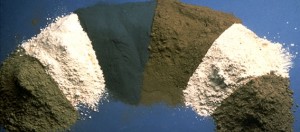The optimum cementitious materials for marine structures can be decided if the requirements and mechanisms of environmental effects are well-known. For this project, it is know that the dominant environmental effect is chloride ions attack and second important effect is sulfate attack coming from seawater and soil. Also there are some requirements for fresh concrete temperature and maximum core temperature. Sustainability should not be forgotten. So the main question is this: What type of concrete and cement (or binder) can satisfy all the requirements?
This can be answered by applying to standards and studies in literature. In this part it was aimed to show concrete produced with fly ash can resist chloride penetration and sulfate attack. It has to be told that the best and primary action to resist environmental effects is producing concrete with low water/cement(binder) ratio. In the project, the water/binder ratio should not exceed 0.38 for marine structures.
Durability of marine structures can be achieved by:
- 1.Low water/binder ratio
- 2.Proper cement and supplementary cementitious materials(SCMs)
- 3.Proper curing method
You could find the rest of the post below as google doc.
![]()

